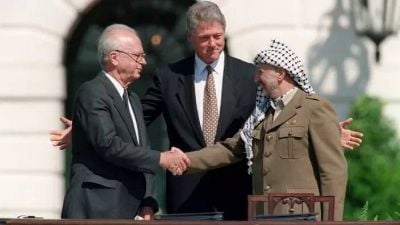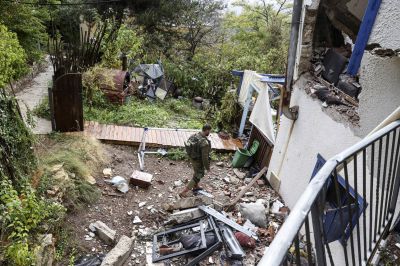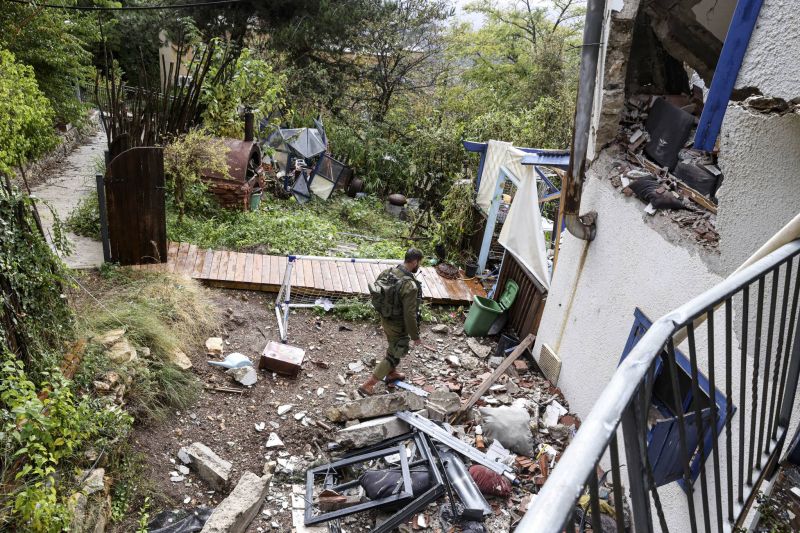
A soldier walks amid the rubble of a house damaged in a strike by Lebanon's Hezbollah movement in Kibbutz Manara in northern Israel near the Lebanon border, on November 27, 2023. AFP or licensorsTO GO WITH AFP STORY BY Chloe ROUVEYROLLES-BAZIREMenara (AFP)JALAA MAREYisrael-lebanon-palestinian-conflict
Since the start of the Oct. 7 Hamas-Israel war, communities in southern Lebanon and northern Israel have witnessed near daily exchanges of fire between Hezbollah and the Israeli army. Over the course of the last two months, thousands of people have left towns in northern Israel, as a no-go Zone was imposed by the Israeli army within 2km of the border.
The largest concentration of Arab-Israelis, also known as Palestinian citizens of Israel, are found in the north of Israel, in towns such as Nazareth, Um al-Fahm and Sakhni. A report by Haaretz on Monday found that some of these communities living in northern towns and villages are becoming increasingly frustrated at the lack of help from the Israeli government to ensure their safety. So who are the Arab-Israelis, and why do some of them feel neglected during the war?
1. How do Arab-Israelis feel about the Israel-Hamas war?
A poll published in November by the non-partisan think tank the Israel Democracy Institute (IDI) found that the war in Gaza war increased the Arab minority's sense of solidarity with Israel. 70 percent of those surveyed said they feel part of the country, up from 48 percent in June – the highest finding since the survey began 20 years ago. But, just 27 percent of Arab respondents said they felt optimistic about Israel's future, compared to 72 percent of Jews.
Recently though, new concerns have come to the surface. A report published on Tuesday by Haaretz found that the Arab-Israeli community in northern Israel is facing a lack of Israeli government assistance to keep them safe and that they are “constantly looking at the sky in fear” as exchanges of fire continue between Hezbollah and the Israeli army.
The National Committee of Arab Local Authorities estimates that 40 percent to 50 percent of residents of Arab towns in Israel have no access to protected spaces. The Association for Civil Rights in Israel says that the authorities "have not yet provided a satisfactory response to the Arab towns and their residents," and that the response "gains secondary validity" because a lot of the towns in northern Israel are Arab.
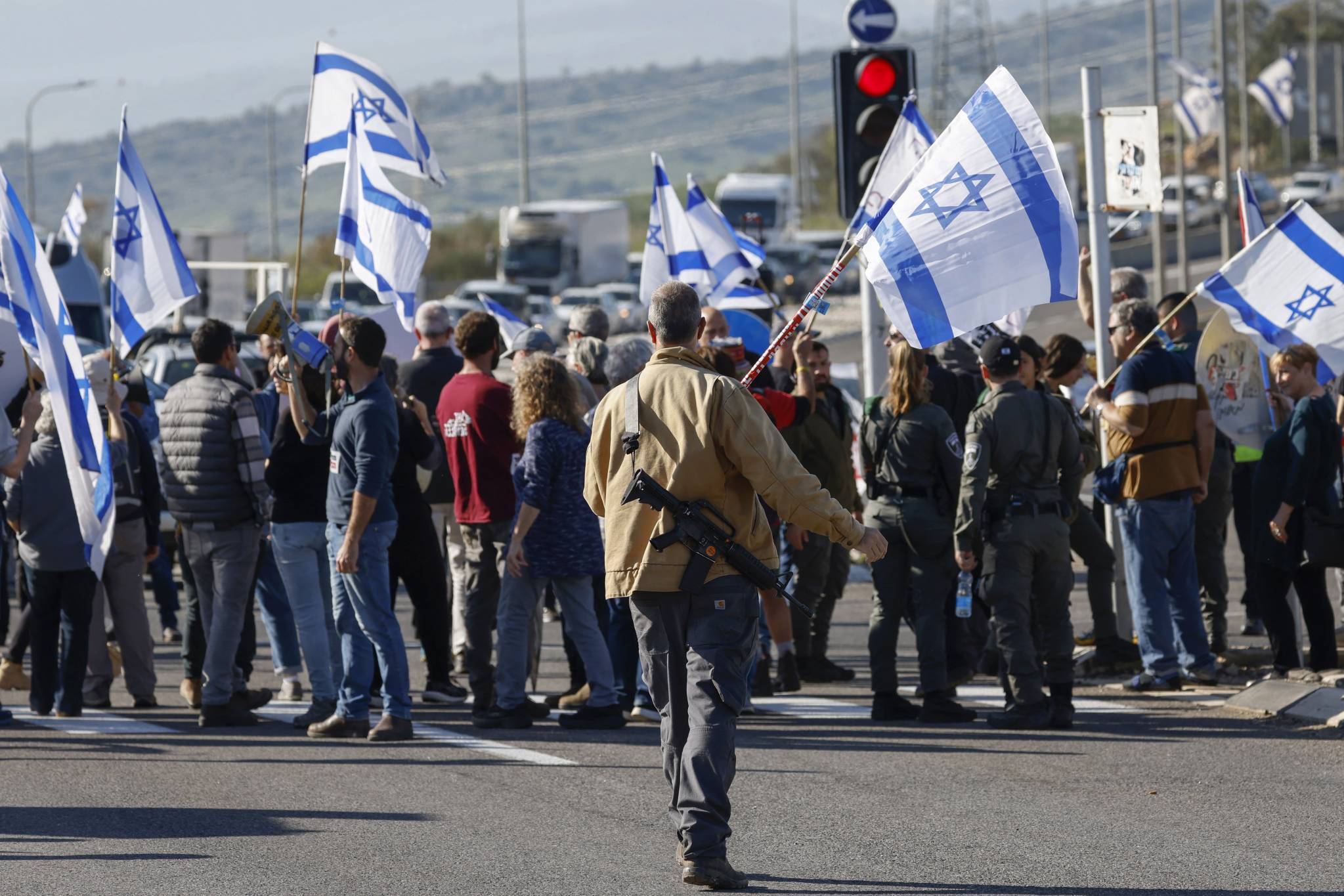 Israelis evacuated from northern areas near the Lebanese border due to ongoing cross-border tensions, lift national flags during a rally near the northern Amiad Kibbutz, demanding to return home on December 26, 2023. (Credit: AFP JALAA MAREY)
Israelis evacuated from northern areas near the Lebanese border due to ongoing cross-border tensions, lift national flags during a rally near the northern Amiad Kibbutz, demanding to return home on December 26, 2023. (Credit: AFP JALAA MAREY)
"In a survey by the Home Front Command, more than half the village's residents asked to be evacuated, but nothing has been done," says Fassuta village engineer Khalil Basal – cited by Haaretz. Basal lives in the northern Christian village of Fassuta, 3.5 kilometers from the Lebanese border, where life has been put on hold, according to the Israeli newspaper. “We're paralyzed right now – no schools, no work, booms every day,” says Basal.
Haaretz also found similar fears in the nearby town of Deir al-Asad, where some of the 3,500 residents are worried about reliving the trauma of 2006 when a mother and her 5-year-old son were killed by a Katyusha rocket in the courtyard of their home. "A similar situation could happen now, and the dead could number in the thousands," says the head of the town, Qasem Asadi. He blames the neglect of Benjamin Netanyahu's government for putting people in his community at risk. "Life in the Arab community isn't important to it right now," Asad says.
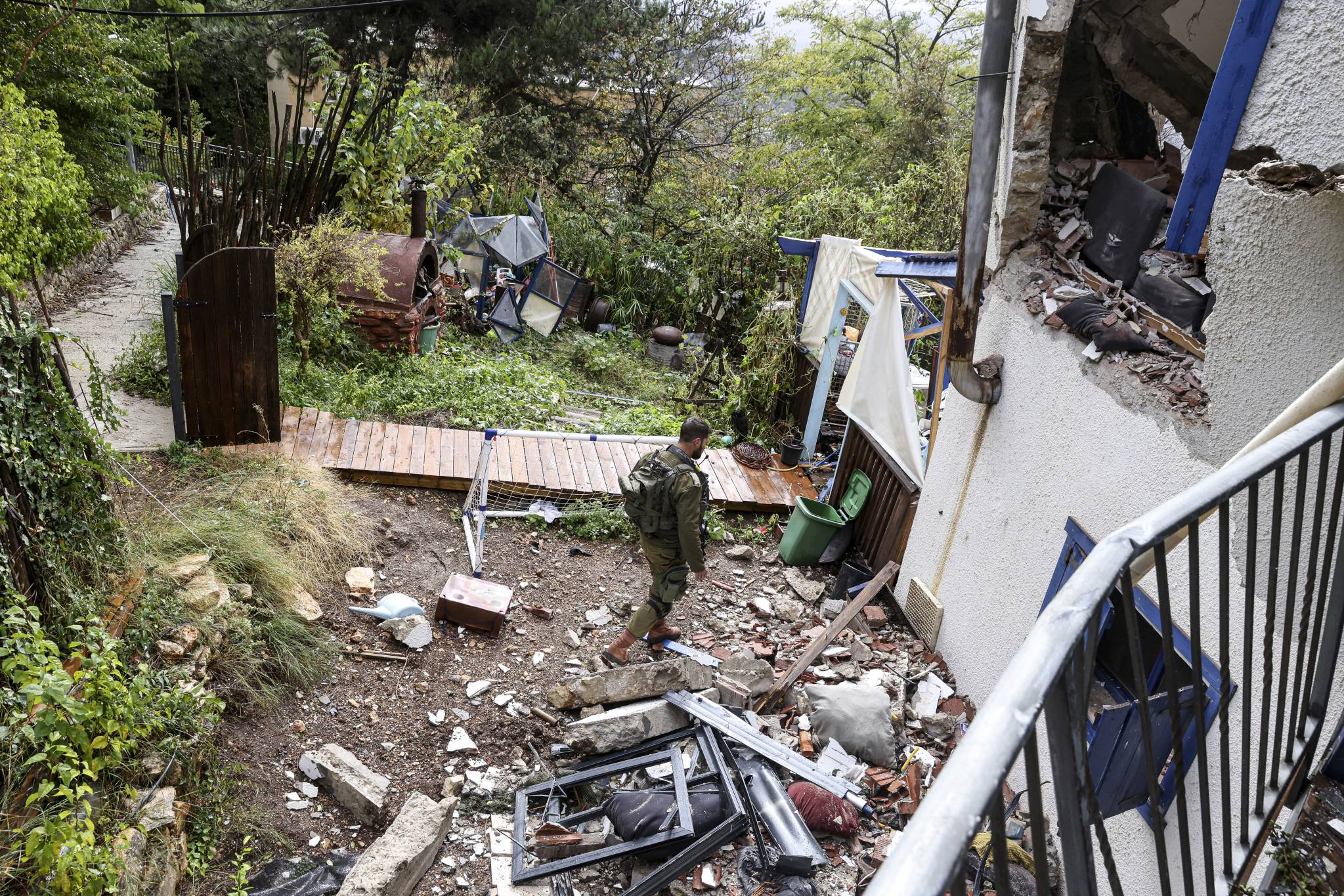 A soldier walks amid the rubble of a house damaged in a strike by Lebanon's Hezbollah movement in Kibbutz Manara in northern Israel near the Lebanon border, on November 27, 2023. (Credit: AFP JALAA MAREY)
A soldier walks amid the rubble of a house damaged in a strike by Lebanon's Hezbollah movement in Kibbutz Manara in northern Israel near the Lebanon border, on November 27, 2023. (Credit: AFP JALAA MAREY)
“Hezbollah's rocket technology has improved, but nothing has changed in the town” in terms of protection he adds.
Some of these frustrations held by Arab-Israelis are also shared by a broader group of residents in the north. On Tuesday a protest was held by a group of residents who were evacuated, following ongoing cross-border attacks from Hezbollah in Lebanon. They say they have been abandoned by the authorities and called for their government to be dissolved – reported the Times of Israel.
2. Who are the Israeli-Arab, or Palestinian citizens of Israel?
There are about 2 million Arabs living in Israel, accounting for about 21 percent of the population – according to the Council on Foreign Relations.
During the war that led to the creation of the state of Israel in 1948, 700,000 thousand Arabs, who were living under the British-ruled mandate in Palestine were forced from or fled their homes, in what Palestinians describe as the Nakba (catastrophe). The 150,000 people that remained were granted citizenship and are known as Arab-Israelis – the community that exists today descends from this group. Most of the Arab-Israeli community feel a shared identity with Palestinians in the West Bank and Gaza. They sometimes describe themselves as "Palestinian citizens of Israel" and "1948 Palestinians."
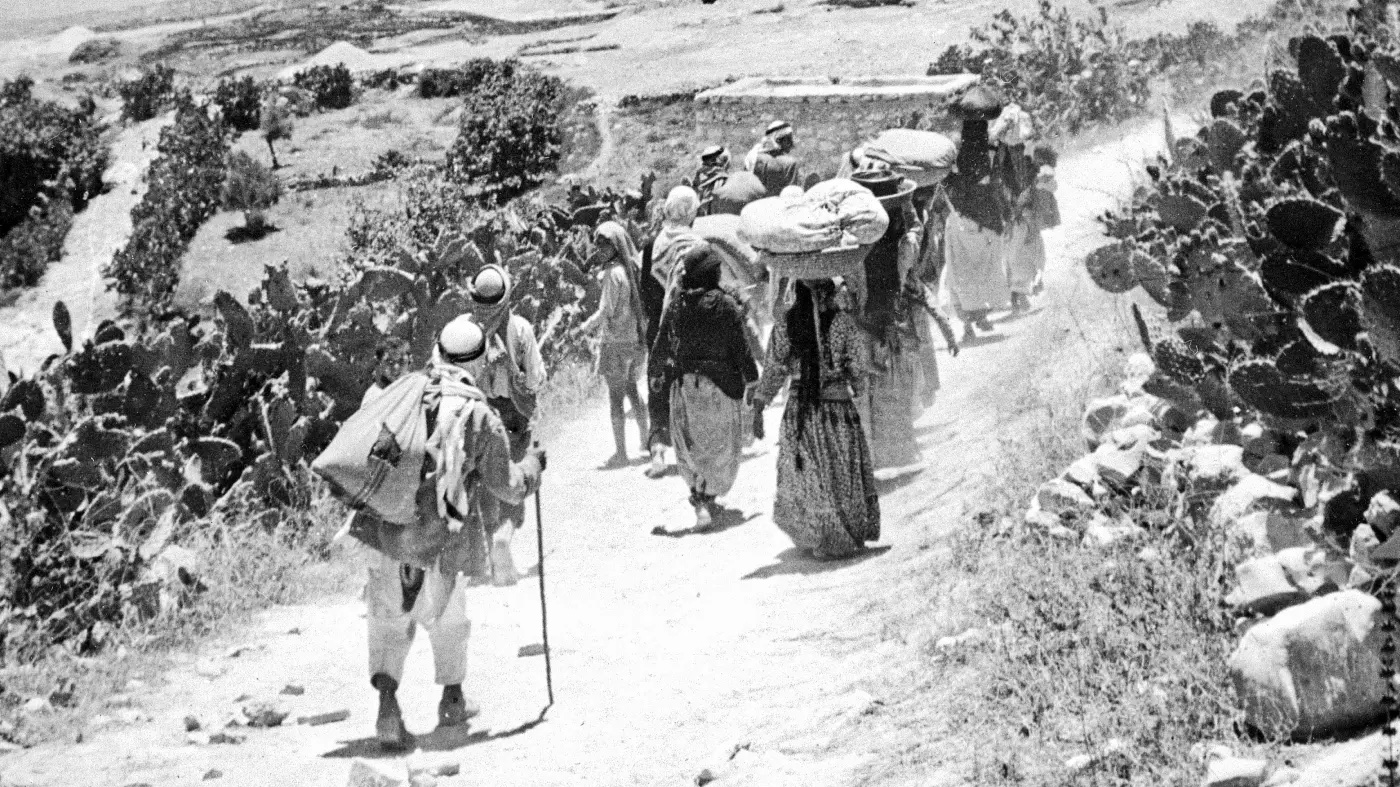 Palestinians driven from their land in 1948. (Credit: AFP)
Palestinians driven from their land in 1948. (Credit: AFP)
In 1949 Israel annexed East Jerusalem, but most of the population living there rejected Israel's offer of citizenship. They are not described as Israeli Arabs but have Israeli residency. Their “permanent resident" status gives them fewer rights than Israeli-Arabs and Jewish communities. This area is considered an occupied Palestinian territory by the United Nations.
Most Arab-Israelis are Muslim (82.9 percent). The rest are Druze (9.2 percent) or Christian (7.9 percent). In northern Israel and in the mixed cities the Arab population is made up of Muslims, Christians and Druze.
3. Where do Arab-Israelis live?
Israel's Arab community lives in five main areas in Israel, according to data from the Israel Democracy Institute:
- Northern Israel (the area around the Galilee): 51.60 percent population are Arab (823,000 people)
- The "Little Triangle" (that marks Israel’s border with the West Bank): 19.70 percent Arab (314,000 people)
- Negev : 16.50 percent (280,000 people)
- The "mixed" Arab-Jewish cities (Acre, Haifa, Jaffa, Ramle, Lod, Nof Hagalil and Maalot-Tarshicha): 8.30 percent (132,000 people)
- Jerusalem corridor (including West Jerusalem): 1.10 percent population is Arab (17,000 people)
It is common for cities to have neighborhoods that are either Jewish or Arab. Similarly in schools, pupils receive either an Arab or Jewish language education.
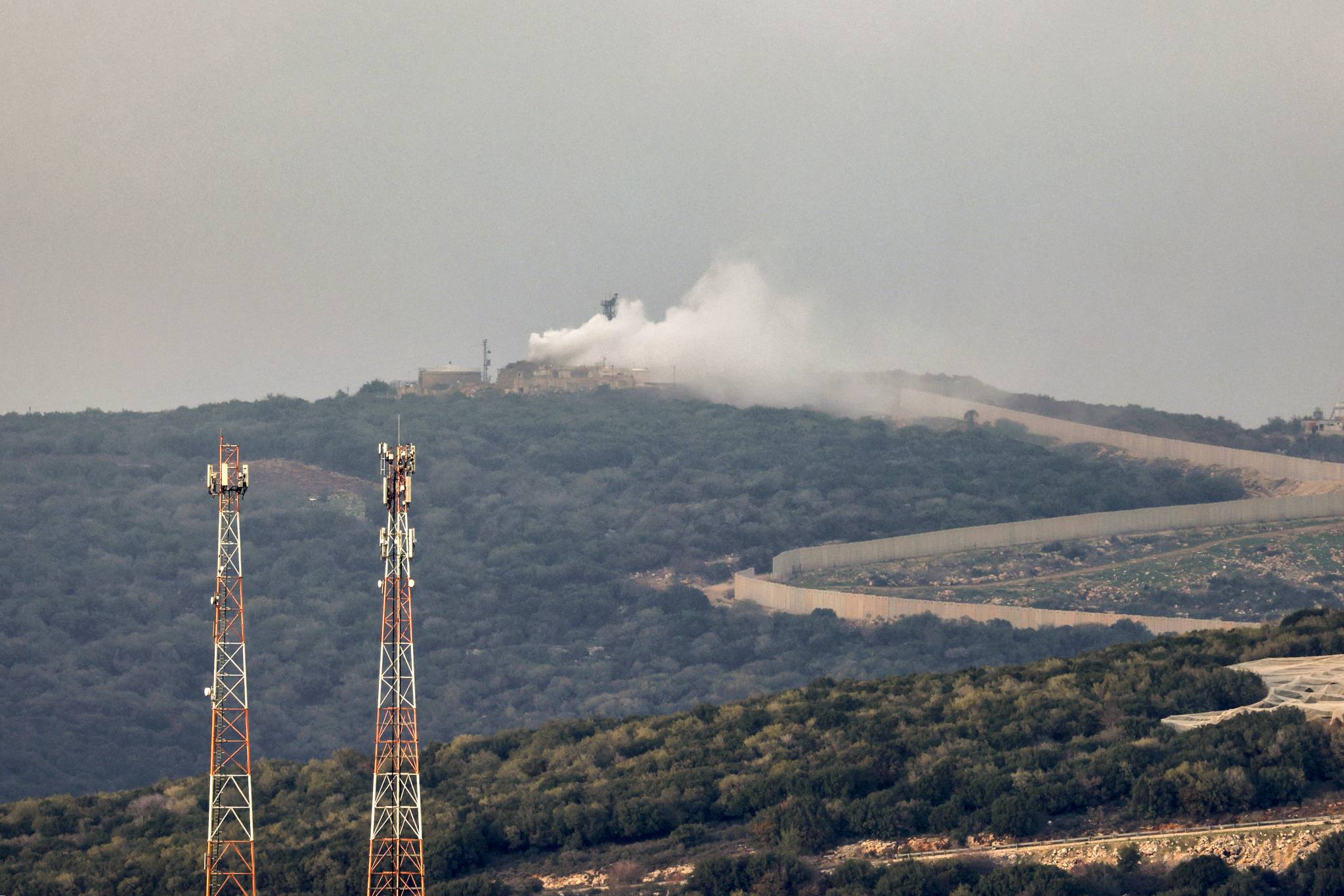 Smoke billows from a Israeli army post on the border with Lebanon after it was hit by a rocket fired from Lebanon on December 12 , 2023, amid increasing cross-border tensions as fighting continues with Hamas militants in the southern Gaza Strip. (Credit: AFP JALAA MAREY)
Smoke billows from a Israeli army post on the border with Lebanon after it was hit by a rocket fired from Lebanon on December 12 , 2023, amid increasing cross-border tensions as fighting continues with Hamas militants in the southern Gaza Strip. (Credit: AFP JALAA MAREY)
4. What rights do Arab-Israelis have?
Arab citizens of Israel, who are different from Arabs living in the West Bank and Gaza Strip, are the largest minority group in the country. Though Arab-Israelis have the same legal rights as Jewish citizens, for years they have faced discrimination, as well as clear socioeconomic differences. Some rights groups point to some Israeli laws, like the 1950 Law of Return, as examples of a two-tier system, where Arabs and Palestinians have fewer rights – though the Israeli government denies this. This law in particular allows Jews across the world to move to Israel where they can automatically gain citizenship. However, non-Jews and Palestinians have no legal right to return to their families' lands from before they were displaced in 1948 and 1967.
Many Arab-Israelis tend to live in poorer areas, with lower levels of education. For example, 95 percent of Arab areas rank in Israel’s lowest socioeconomic clusters – according to the Central Bureau of Statistics. 55.7 percent of Arab families in 2020 were found to be poor, in comparison to 39.7 percent of Jewish families, data from the National Insurance Institute found, cited by Haaretz. In May 2021 these tensions and frustrations came to the fore in a spate of inter-communal violence.
